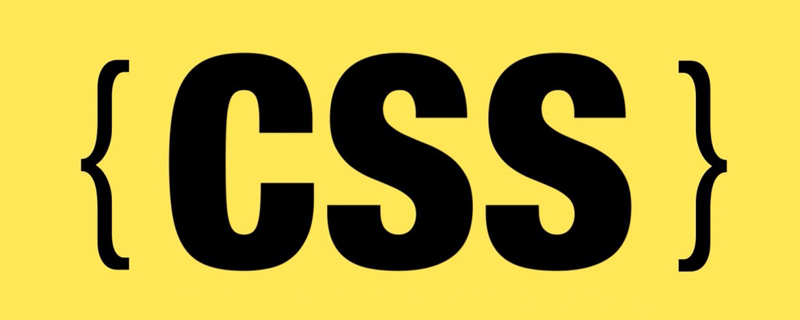
This article will introduce you to some interesting background knowledge. Using some very small units and just a few lines of code, you can produce wonderful and interesting results. Background effect~
The impact of magnitude on background graphics
The protagonist of this article is mainly:
- Multiple radial gradients (repeating-radial -gradient)
- Multiple angular gradient (repeating-conic-gradient)
What is the order of magnitude for the background graphic? Let's take a look at such an interesting phenomenon:
We use repeating-conic-gradient to implement a graphic with multiple angular gradients. The code is very simple, as shown below:
<div></div>
div {
width: 100vw;
height: 100vh;
background: repeating-conic-gradient(#fff, #000, #fff 30deg);
}
Replace 30deg with 0.1deg
Then, we use a very small value to replace the above code 30deg, similar to this:
{
background: repeating-conic-gradient(#fff, #000, #fff 0.1deg);
}What is this? Think about it, what will the graphics drawn by this line of code look like?
Look at the effect:

Wow, incredible. 0.1deg is very critical here. The smaller the angle here (preferably less than 1deg), the cooler the graphics will be, which is what we call the impact of the order of magnitude on the background graphics.
CodePen -- One Line CSS Pattern
Observe the change process with the help of CSS @property
Before, if we directly wrote the following transition code , it is impossible to get tween transition animation, only frame-by-frame animation:
div{
background: repeating-conic-gradient(#fff, #000, #fff 0.1deg);
transition: background 1s;
}
div:hover {
background: repeating-conic-gradient(#fff, #000, #fff 30deg);
}can only get this effect, the reason is that CSS does not support direct transition animation for such complex gradients :

OK, next, use it in this article--CSS @property, making the impossible possible Introduction## With the knowledge of #CSS @property, we can use CSS @property to observe the process of their two status changes.
@property --angle {
syntax: '<angle>';
inherits: false;
initial-value: 0.1deg;
}
div{
background: repeating-conic-gradient(#fff, #000, #fff var(--angle));
transition: --angle 2s;
}
html:hover {
--angle: 30deg;
}

CodePen -- repeating-conic-gradient CSS Pattern Transition (Only Chrome 85)
PassedCSS @property realizes the tween transition animation. Seeing the change process from 30deg to 0.1deg, we can roughly see that the small unit 0.1 How deg affects graphics.
Multiple radial gradients & multiple angular gradients with small units to achieve interesting backgrounds
Using some of the above tips, we use multiple radial gradients (repeating- radial-gradient) and multiple angular gradients (repeating-conic-gradient) can generate some very interesting background images. Simply list some:div {
background-image: repeating-radial-gradient(
circle at center center,
rgb(241, 43, 239),
rgb(239, 246, 244) 3px
);
}

div {
background-image: repeating-radial-gradient(
circle at 15% 30%,
rgb(4, 4, 0),
rgb(52, 72, 197),
rgb(115, 252, 224),
rgb(116, 71, 5),
rgb(223, 46, 169),
rgb(0, 160, 56),
rgb(234, 255, 0) 2px
);
}

div {
background-image: repeating-radial-gradient(
circle at center center,
rgb(81, 9, 72),
rgb(72, 90, 223),
rgb(80, 0, 34),
rgb(34, 134, 255),
rgb(65, 217, 176),
rgb(241, 15, 15),
rgb(148, 213, 118) 0.1px
);
}

div {
background-image: repeating-radial-gradient(
ellipse at center center,
rgb(75, 154, 242),
rgb(64, 135, 228),
rgb(54, 117, 214),
rgb(43, 98, 200),
rgb(33, 79, 185),
rgb(22, 60, 171),
rgb(12, 42, 157),
rgb(1, 23, 143) 0.01px
);
}

CodePen Demo -- Magic Gradient Art
How small can it be?repeating-radial-gradient It is similar to radial-gradient() and takes the same arguments, but it repeats the color in all directions, overriding it the entire container.
1px, which is the focus of this article. How small can it be?
:root {
--length: 1px
}
{
background-image: repeating-radial-gradient(
circle at 17% 32%,
rgb(4, 4, 0),
rgb(52, 72, 197),
rgb(115, 252, 224),
rgb(116, 71, 5),
rgb(223, 46, 169),
rgb(0, 160, 56),
rgb(234, 255, 0) var(--length)
);
}I drew 8 graphics from 100px to 0.00001px for comparison:


在 0.001px 到 0.0001px 这个区间段,基本上图形已经退化为粒子图形,见不到径向渐变的轮廓了,而到了 0.00001px 这个级别,居然退化为了一张纯色图片!
CodePen Demo -- 不同级别长度单位对 repeating-radial-gradient 图形的影响
使用 repeating-radial-gradient 实现电视雪花噪声动画
在上述 DEMO 中,我们发现,当在 0.001px 到 0.0001px 这个区间段,repeating-radial-gradient 基本退化为了粒子图形:
{
background-image: repeating-radial-gradient(
circle at 17% 32%,
rgb(4, 4, 0),
rgb(52, 72, 197),
rgb(115, 252, 224),
rgb(116, 71, 5),
rgb(223, 46, 169),
rgb(0, 160, 56),
rgb(234, 255, 0) 0.0008px
);
}
这不是非常类似电视雪花屏的效果么?微调 0.0008px 这个参数, 利用几帧不同的动画,我们就可以得到电视雪花噪声的动画了。

啊哈,非常的有意思,完整的源码你可以戳这里:
Copepen Demo -- PURE CSS TV NOISE EFFECT (Only Chrome 85+)
更多编程相关知识,请访问:编程视频!!
The above is the detailed content of Pure CSS to achieve wonderful and interesting background effects! !. For more information, please follow other related articles on the PHP Chinese website!
 css ul标签怎么去掉圆点Apr 25, 2022 pm 05:55 PM
css ul标签怎么去掉圆点Apr 25, 2022 pm 05:55 PM在css中,可用list-style-type属性来去掉ul的圆点标记,语法为“ul{list-style-type:none}”;list-style-type属性可设置列表项标记的类型,当值为“none”可不定义标记,也可去除已有标记。
 css与xml的区别是什么Apr 24, 2022 am 11:21 AM
css与xml的区别是什么Apr 24, 2022 am 11:21 AM区别是:css是层叠样式表单,是将样式信息与网页内容分离的一种标记语言,主要用来设计网页的样式,还可以对网页各元素进行格式化;xml是可扩展标记语言,是一种数据存储语言,用于使用简单的标记描述数据,将文档分成许多部件并对这些部件加以标识。
 css3怎么实现鼠标隐藏效果Apr 27, 2022 pm 05:20 PM
css3怎么实现鼠标隐藏效果Apr 27, 2022 pm 05:20 PM在css中,可以利用cursor属性实现鼠标隐藏效果,该属性用于定义鼠标指针放在一个元素边界范围内时所用的光标形状,当属性值设置为none时,就可以实现鼠标隐藏效果,语法为“元素{cursor:none}”。
 css怎么实现英文小写转为大写Apr 25, 2022 pm 06:35 PM
css怎么实现英文小写转为大写Apr 25, 2022 pm 06:35 PM转换方法:1、给英文元素添加“text-transform: uppercase;”样式,可将所有的英文字母都变成大写;2、给英文元素添加“text-transform:capitalize;”样式,可将英文文本中每个单词的首字母变为大写。
 rtl在css是什么意思Apr 24, 2022 am 11:07 AM
rtl在css是什么意思Apr 24, 2022 am 11:07 AM在css中,rtl是“right-to-left”的缩写,是从右往左的意思,指的是内联内容从右往左依次排布,是direction属性的一个属性值;该属性规定了文本的方向和书写方向,语法为“元素{direction:rtl}”。
 css怎么设置i不是斜体Apr 20, 2022 am 10:36 AM
css怎么设置i不是斜体Apr 20, 2022 am 10:36 AM在css中,可以利用“font-style”属性设置i元素不是斜体样式,该属性用于指定文本的字体样式,当属性值设置为“normal”时,会显示元素的标准字体样式,语法为“i元素{font-style:normal}”。
 怎么设置rotate在css3的旋转中心点Apr 24, 2022 am 10:50 AM
怎么设置rotate在css3的旋转中心点Apr 24, 2022 am 10:50 AM在css3中,可以用“transform-origin”属性设置rotate的旋转中心点,该属性可更改转换元素的位置,第一个参数设置x轴的旋转位置,第二个参数设置y轴旋转位置,语法为“transform-origin:x轴位置 y轴位置”。


Hot AI Tools

Undresser.AI Undress
AI-powered app for creating realistic nude photos

AI Clothes Remover
Online AI tool for removing clothes from photos.

Undress AI Tool
Undress images for free

Clothoff.io
AI clothes remover

AI Hentai Generator
Generate AI Hentai for free.

Hot Article

Hot Tools

SublimeText3 Linux new version
SublimeText3 Linux latest version

MinGW - Minimalist GNU for Windows
This project is in the process of being migrated to osdn.net/projects/mingw, you can continue to follow us there. MinGW: A native Windows port of the GNU Compiler Collection (GCC), freely distributable import libraries and header files for building native Windows applications; includes extensions to the MSVC runtime to support C99 functionality. All MinGW software can run on 64-bit Windows platforms.

SAP NetWeaver Server Adapter for Eclipse
Integrate Eclipse with SAP NetWeaver application server.

VSCode Windows 64-bit Download
A free and powerful IDE editor launched by Microsoft

Notepad++7.3.1
Easy-to-use and free code editor








